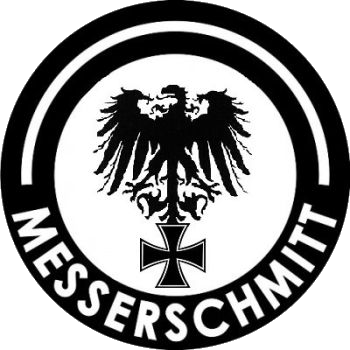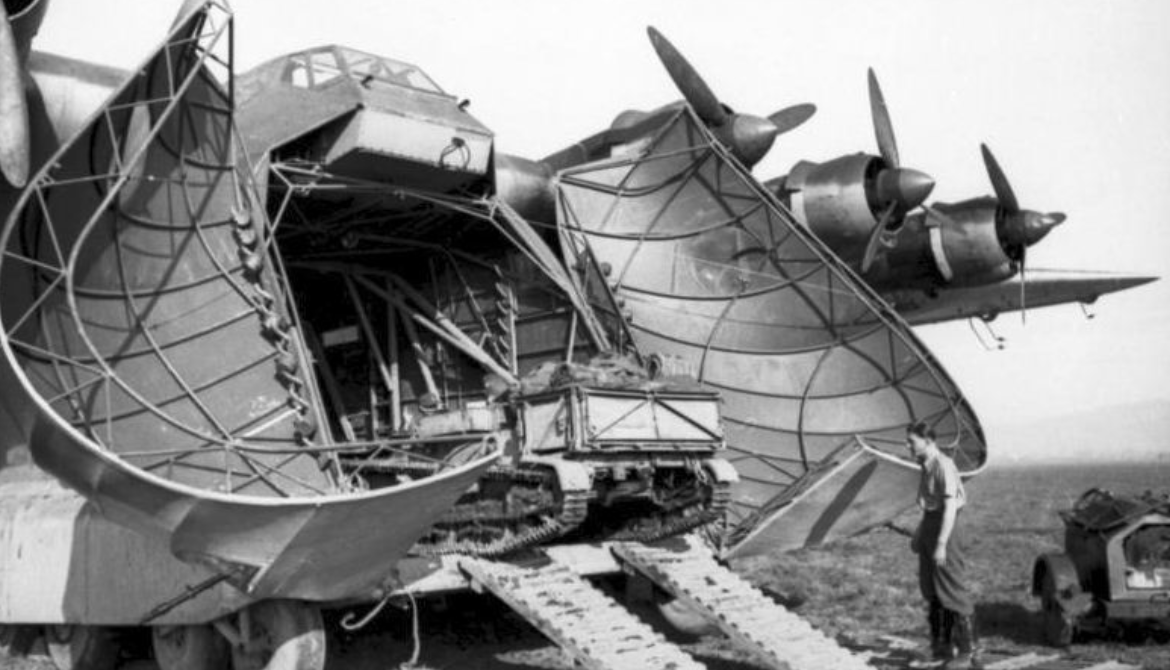Messerschmitt Me 323 Gigant ("Giant")
Role Heavy transport
Manufacturer Messerschmitt
First flight January 20, 1942
Introduction 1943
Retired 1944
Primary user Luftwaffe
Produced 1942–1944
Number built 198
Developed from Messerschmitt Me 321
.
History Bayerische Flugzeugwerke (BFW)
Messerschmitt AG
Messerschmitt Me 323 Gigant ("Giant")

The Messerschmitt Me 323 Gigant ("Giant") was a German military transport aircraft of World War II. It was a powered variant of the Me 321 military glider and was the largest land-based transport aircraft to fly during the war. In total, 213 were made, with 15 being converted from the Me 321.
The Me 323 was the result of a 1940 German requirement for a large assault glider in preparation for Operation Sea Lion, the projected invasion of Great Britain. The DFS 230 light glider had already proven its worth in the Battle of Fort Eben-Emael in Belgium (the first ever assault by gliderborne troops), and would later be used successfully in the invasion of Crete in 1941.
Development

The Me 323 was the result of a 1940 German requirement for a large assault glider in preparation for Operation Sea Lion, the projected invasion of Great Britain. The DFS 230 light glider had already proven its worth in the Battle of Fort Eben-Emael in Belgium (the first ever assault by gliderborne troops), and would later be used successfully in the invasion of Crete in 1941.
0
KmCeiling
0
KmCombat RANGE
0
Km/hAircraft Speed
0
Max Crew
Photo Gallery
Bayerische Flugzeugwerke (BFW)
Messerschmitt
Messerschmitt Me 323 Gigant ("Giant")


Bayerische Flugzeugwerke (BFW)
Messerschmitt
Messerschmitt Me-323 Gigant
General Info
-
-
- Crew: 5
- Capacity: 130 troops or 10,000–12,000 kg (22,000–26,500 lb) payload
- Length: 28.2 m (92 ft 6 in)
- Wingspan: 55.2 m (181 ft 1 in)
- Height: 10.15 m (33 ft 4 in)
- Wing area: 300 m2 (3,200 sq ft)
-
Powerplant
-
-
- Empty weight: 27,330 kg (60,252 lb)
- Gross weight: 29,500 kg (65,036 lb)
- Max takeoff weight: 43,000 kg
- Powerplant: 6 × Gnome-Rhône 14N 14-cylinder air-cooled radial piston engines 1,180 PS (1,164 hp; 867.9 kW) take-off power
- Propellers: 3-bladed Chauvière variable-pitch propeller
-
Performance
- Maximum speed: 285 km/h (177 mph
- Cruise speed: 218 km/h (135 mph,
- Range: 800 km (500 mi, 430 nmi)
- Ferry range: 1,100 km 680 mi
- Service ceiling: 4,000 m (13,000 ft)
- Rate of climb: 3.6 m/s (710 ft/min)
.
Links to Youtube & Others
Some Me 321s were converted to Me 323s, but most were built as six-engined aircraft from the beginning. Early models were fitted with wooden, two-blade propellers, while later versions had metal, three-blade, variable-pitch versions.
Messerschmitt
Me 323 Gigant ("Giant")
By September 1942, Me 323s were being delivered for use in the Tunisian campaign. They entered service in the Mediterranean theatre in November 1942.
Youtube Link
A total of 198 Me 323s were built before production ceased in April 1944. Several production versions were built, beginning with the D-1. Later D- and E- versions.














